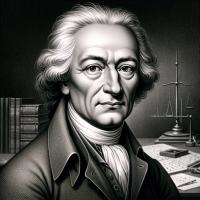jar546
CBO
In the realm of mathematics and physics, few names shine as brightly as Leonhard Euler. Born in the early 18th century, Euler's genius transcended the era's understanding, laying down principles that form the bedrock of modern engineering and building practices. This article delves into how Euler's mathematical theories have influenced and shaped the world of construction and building codes as we know it today.
Leonhard Euler, a Swiss mathematician and physicist, was a pioneer in various fields of mathematics, including calculus and graph theory. But it is his contributions to structural engineering principles that resonate most profoundly within the construction industry. Euler's methodologies and theories helped bridge the gap between abstract mathematical concepts and practical engineering solutions.
One of Euler's most significant contributions to engineering is the Euler-Bernoulli beam theory. This theory, which he developed alongside Daniel Bernoulli, provides the foundational principles for understanding the behavior of beams under load. The Euler-Bernoulli beam equation describes how a beam bends under various forces, a critical component in the design and analysis of structural elements in buildings. This theory allows engineers to calculate the load-bearing capacity of beams, ensuring the structural integrity and safety of modern buildings.
Euler's methods also extended to the realm of fluid dynamics and the movement of rigid bodies. His work in these areas has implications for everything from the aerodynamics of large buildings to the design of HVAC systems, vital for maintaining the environmental standards within modern structures.
Another area where Euler's work has left an indelible mark is in numerical methods, particularly Euler's Method for solving differential equations. This method provides a way to approximate solutions to complex problems in structural dynamics, a technique still widely used in engineering analyses and simulations.
Moreover, Euler's contributions to graph theory and topology also find practical applications in construction planning and network analysis, essential for modern urban development and infrastructure layout.
In conclusion, Leonhard Euler’s contributions extend far beyond the esoteric world of mathematics. His work underpins many of the principles and practices in contemporary building design and construction. Understanding Euler's theories provides valuable insight into the mathematical foundations of the structures we inhabit and the codes that govern their construction. It's a testament to Euler's genius that centuries after his passing, his work continues to influence and shape the ever-evolving landscape of building practices and regulations.

